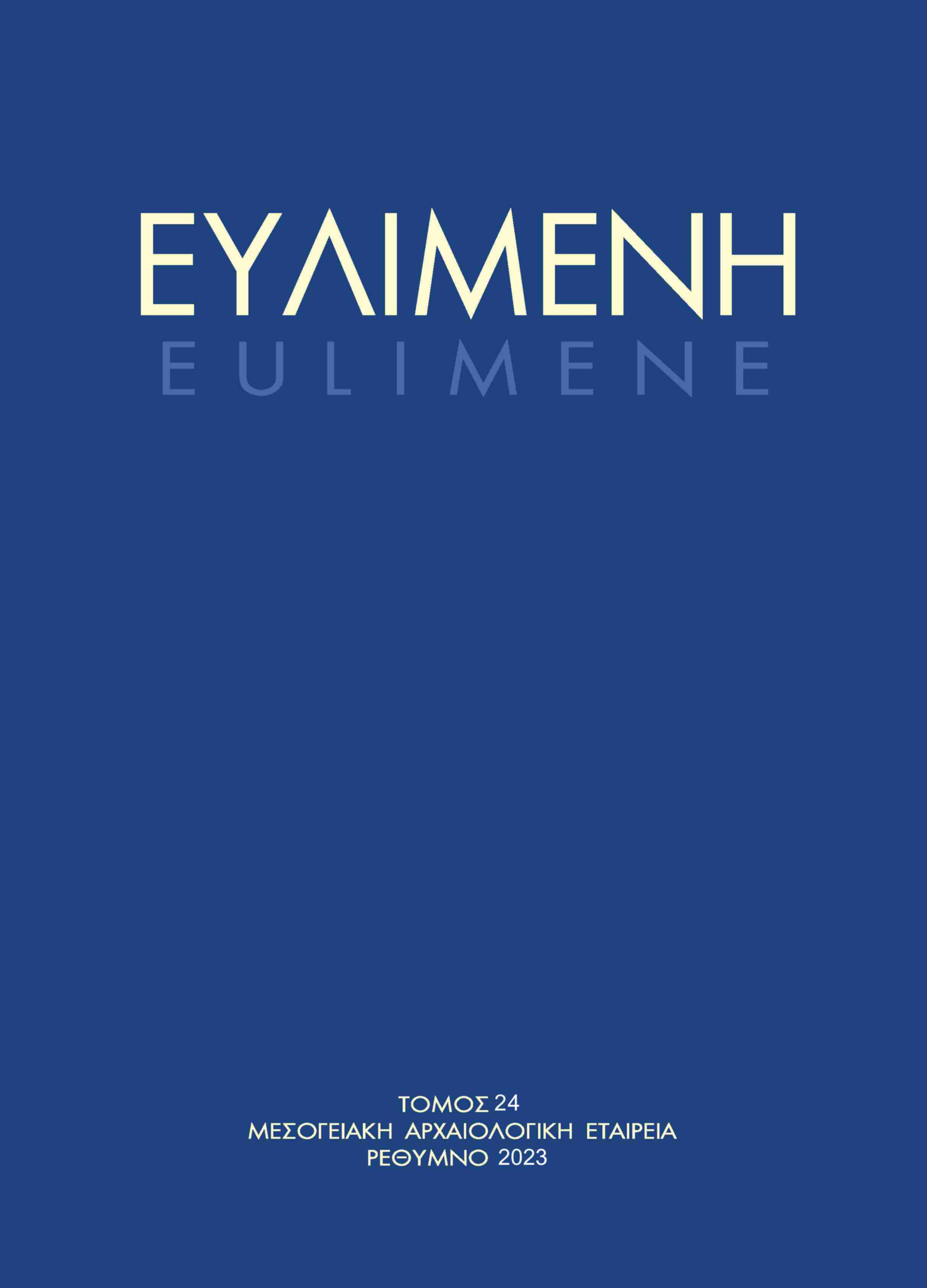Ο γλυπτός διάκοσμος του Ναού Α στον Πρινιά. Μία ερμηνευτική πρόταση

Περίληψη
The interpretation proposed herein for the sculptural decoration of the so-called Temple A at Prinias takes into consideration its connection with the traditional architectural type of the oikos-naos, as well as the representational data of votives from Cretan sanctuaries. The correlation of the above data indicates that the theory whereby the three different types of female figures portrayed in the sculptural decoration reflect the honored Mistress of animals is precarious.
The position which the three types of figures have in the structural type of the oikos-naos is subject to the principle of ranking sequence; the higher position of the seated Mistress of Animals is prominent when compared both to the downgraded position of the clothed and the nude female figures who are portrayed standing and also to the procession of the armed charioteers.
This is the way in which the ruling class of the second half of the 7th c. BC notes the necessary subjection of the inhabitants of Prinias who had full political rights to the transcendental world of the honored Mistress of Animals.
Λεπτομέρειες άρθρου
- Τεύχος
- EULIMENE 24 (2023)
- Ενότητα
- ΑΡΘΡΑ
- Κατηγορίες

Αυτή η εργασία είναι αδειοδοτημένη υπό το CC Αναφορά Δημιουργού – Μη Εμπορική Χρήση – Όχι Παράγωγα Έργα 4.0 4.0.
Οι συγγραφείς των άρθρων που δημοσιεύονται στην Ευλιμένη διατηρούν τα δικαιώματα πνευματικής ιδιοκτησίας επί των άρθρων τους, παραχωρώντας στο περιοδικό το δικαίωμα της πρώτης δημοσίευσης. Άρθρα που δημοσιεύονται στην Ευλιμένη μπορούν να χρησιμοποιούνται ελεύθερα για μη κερδοσκοπικούς σκοπούς, χωρίς δικαίωμα τροποποίησης (δημιουργία παράγωγου έργου), με αναφορά στο συγγραφέα και στην πρώτη δημοσίευση. Η Μεσογειακή Αρχαιολογική Εταιρεία διατηρεί το δικαίωμα να δημοσιεύει, να αναπαράγει, να παρουσιάζει στο κοινό, να διανέμει και να χρησιμοποιεί άρθρα που δημοσιεύονται στην Ευλιμένη σε οποιοδήποτε μέσο και μορφή, είτε μεμονωμένα είτε ως μέρη συλλογικών έργων, για όλο το χρόνο διάρκειας προστασίας της πνευματικής ιδιοκτησίας και για όλες τις χώρες του κόσμου. Αυτό περιλαμβάνει, ενδεικτικά και όχι αποκλειστικά, το δικαίωμα δημοσίευσης των άρθρων σε τεύχη του περιοδικού Ευλιμένη, αναπαραγωγής και διανομής μεμονωμένων αντιγράφων των άρθρων, αναπαραγωγής ολόκληρων των άρθρων σε άλλη έκδοση της Μεσογειακής Αρχαιολογικής Εταιρείας, και αναπαραγωγής και διανομής των άρθρων ή της περίληψης τους με χρήση πληροφορικού συστήματος αποθετηρίου.





